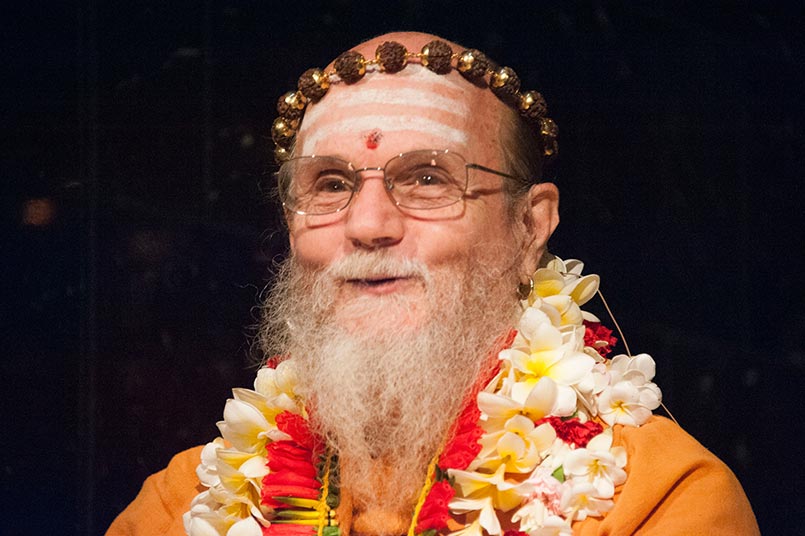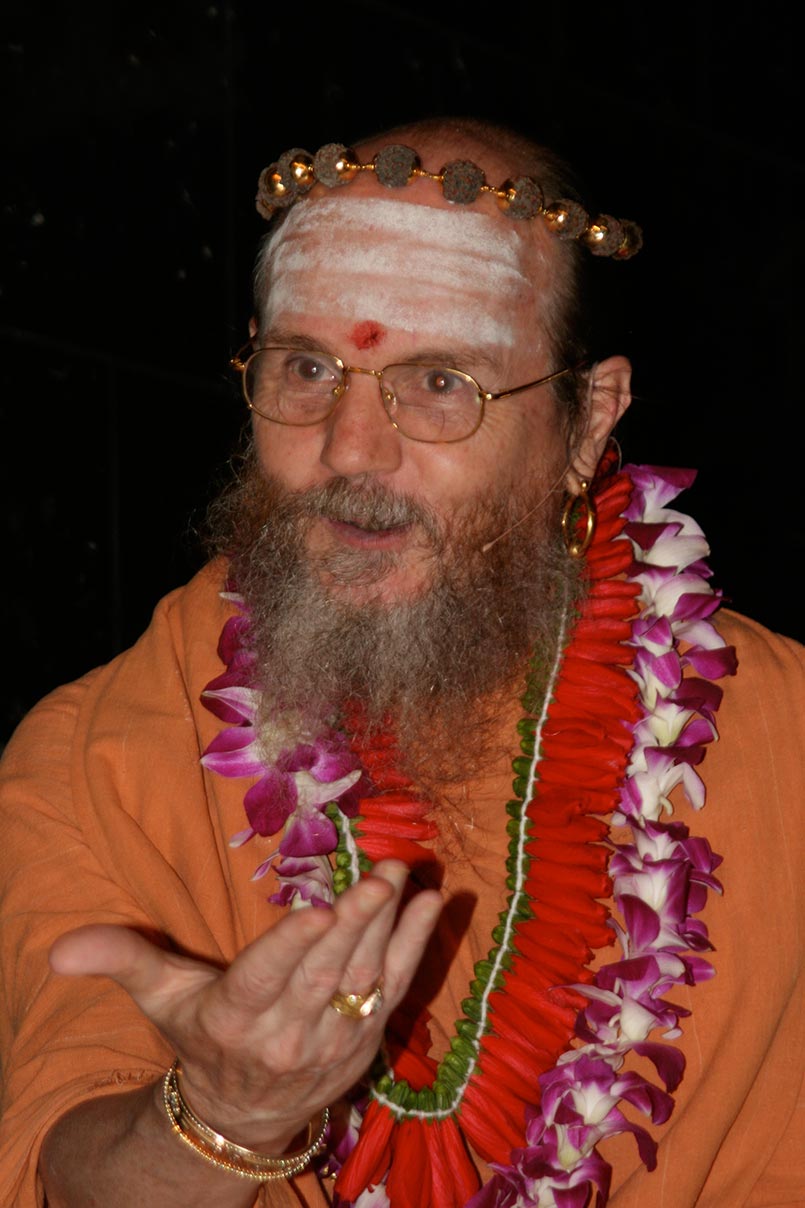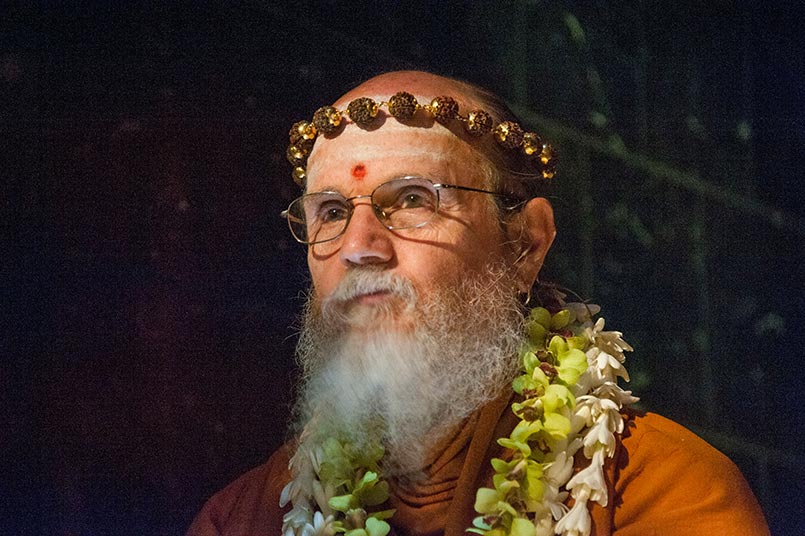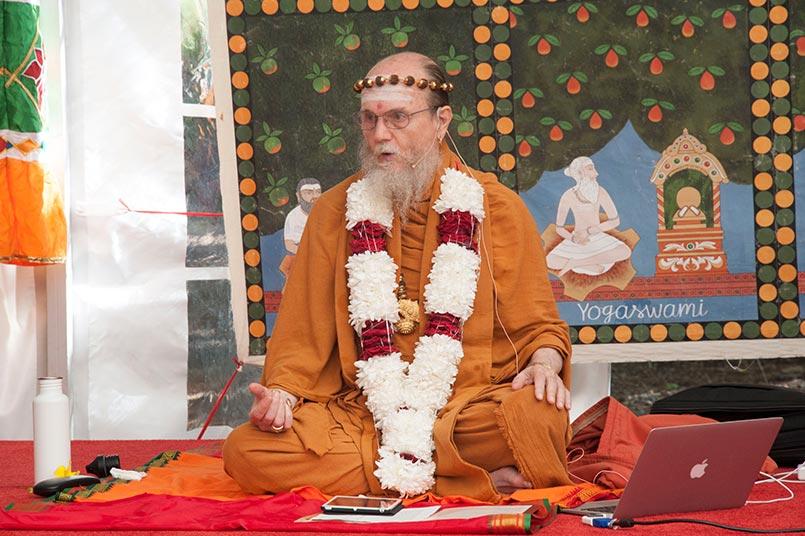Lord Nataraja, the Meaning of Siva's Dance

Bodhinatha’s Latest Upadeshas:
“What is the Meaning of Siva’s Dance” (February 5,2017)
Initially we’re looking at the world. By Siva’s revealing grace, anugraha, ultimately we turn toward God. The soul matures, fulfilling dharmas. We reach a point where we see that Siva is the doer, guiding us, adjusting our angle toward Himself. “Sarvam Sivan seyal.” Siva is doing it all. We’re flowing with the dance of Siva.
Path to Siva, Lesson 15
Dancing with Siva, Lesson 97,
The Master Course Trilogy, Introduction
Click here to go to an index of all of Bodhinatha’s and Gurudeva’s online audio.
From the Agamas

Aum Namah Sivaya
As the monastery heads into its two day retreat (our lunar weekends) we thought we would leave you with an excerpt from the Matanga Agama's Vidya Pada. Here Sage Matanga has asked Lord Siva to explain the inner most layers of existence. In part of His answer are briefly explained the five mantras which compose Sadasiva:
The Nature of Adhikara Tattva (Sadasiva Tattva)
translation by D.R. S.P Sabharathanam Sivacharya
It is figuratively said that Sadasiva appears with a body. In reality His body is of the nature of five mantras
of Sivasakti. He is with the head formed of Isana-mantra; face formed of Tatpurusha -mantra; heart formed
of Aghora-mantra; secret part formed of Vamadeva-mantra; all other parts of His body formed of
Sadyojata-mantra. There are three more Saktis - Harini Janani and Rodhayitri. O the great Sage! these
eight Saktis are said to be constituting the form of Sadasiva to be appearing as the body of Sadasiva. Their
vigor and differentiations would be told afterwards in the sequel. Therefore it is not desired to speak
elaborately here. Yet their essential nature is now told here pointedly.
There are eight aspects of the Great Isvara and these eight aspects present themselves in the form of eight
Saktis. These are made known to you very briefly not in an extensive way. The incredible lordship of Isvara
is at the state of apex comparable to the highest part of a body the head. Through the grace-yielding
Saktis which are five in number and which are manifested by Isana the Lord compassionately and swiftly
manifests the power of knowing and doing within the souls brings them out of the hold of anava-mala and
installs them in a pure realm which is at the highest level like the head. Therefore the Lord is said to be
with the head constituted of Isana-mantra.
His face is the mass of effulgent Sakti. Through this face He showers profusely the flashing sparks of
guiding words and utterances from the fire of knowledge-scriptures and fills the worlds of all adhvas
with such sparks. The word 'pum' denotes purity. He purifies the souls which are living in the world
consisting of moving and non-moving things by removing the heap of ignorance from them. Therefore
He is called 'Pumsa.' The face is conceived to be of the nature of assumptive power (parigraha sakti) which
is all-pervasive. This assumptive power is known as 'maha-maya' and since it is the causal source of sound
it is conceived as the face. Since the Lord presents Himself in the 'maha-maya' conceived in the form of
face He is said to be with the face constituted of Tatpurusha-mantra.
It is revealed that the heart is identical with constant oneness with the absolute Existence characterized by
sivatva (power of all-knowing and all-doing). The word Aghora denotes tranquility. Through the constant
oneness with Existence (sivatva) He is always in a state of tranquility. The term 'ghora' denotes the limiting
factors such as mala likes and dislikes and others. Since He is beginninglessly free from such 'ghora' he is
called 'aghora'. Since His heart is identical with the innate nature of tranquility He is said to be with the
heart constituted of Aghora-mantra.
The term 'vama' associated with the word 'guhya' denotes the Kriya-sakti of the Lord. Vama means
strangely or differently formed and guhya means 'not directly seen'. The Lord who shines forth in the
entire range of things (Visvarat) accomplishes the creation of variegated range of worlds and tattvas
through the thirteen kalas evolved from the Vamasakti (Kriyasakti). The term 'vama' denotes the nature
of being contrary. In this universe the existence of Sadasiva is inferred through the activities which are
contrary and opposed to each other. Through such activities He grants all the fruits to the hosts of souls
as desired by them. Therefore Lord Sadasiva is said to be with the secret part constituted of Vamadeva
mantra.
The term 'murti' denotes the body. The body of the Lord is of the nature of His own mighty power of
knowing and doing associated with the authority over creation. Sadyojata manifests Himself from the
transcendental laya tattva for the sake of cosmic play related to the worlds and the worldly beings. Since
he effortlessly leaves out of state of laya and assumes another state such effortless activity is figuratively
termed as 'play'. He assumes the state of being with a body instantaneously at the very moment He wills to
create. Therefore His form is considered to be constituted of Sadyojata-mantra. In this way Sadasiva
appears with a form constituted of these five mantras.
If you understood any of this and you want to read more you can find our Agama translations on our Books Page. Just scroll down and click the scriptures tab.
Siva's Infinite Forms; The Cycle of Desire

Bodhinatha's Latest Upadeshas:
"Siva's Traditional Forms, Pancha Brahman, Cycle of Desire" (January 28,2017)
"Every form is a form of Siva." The Sivalinga symbolizes Siva's formless state.
Yantras for Siva temples involve the Panchakshara Mantra. Kadavul represents Si, Siva in a fiery aspect; Iraivan represents Ya, akasha. Reflect on that and see the difference. The five faces of Panchabrahma: Tatpurusha, Aghora, Sadjojata, Vamadeva, Ishana. The Trishula represents three shaktis: iccha, kriya and jnani shaktis. Love, action, wisdom. Iccha is also translated as desire. We cycle through desires, gaining wisdom, moving to higher and higher desires. The highest form of desire is selfless service-karma yoga or seva. Let's do more of it.
Path to Siva, Lesson 14
The Five Powers of Siva
Click here to go to an index of all of Bodhinatha's and Gurudeva's online audio.
How to See God – Bodhinatha's Upadesha

Bodhinatha's Recent Sun One Upadeshass:
"How Can We See God" (January 21,2017)
The divine is in everyone. "See everyone as God." Even in the terrorist, even in the criminal, the seed of divinity is there. Over many lifetimes that divinity is supposed to grow. Bring in devotion, that moves out emotion, displaces anger. As Chellapaswami said: "Oru pollaappum illai." We should accept everything that happens because nothing is wrong.
Path to Siva, Lesson 13
Master Course Trilogy, Dancing with Siva, Sloka 3
Click here to go to an index of all of Bodhinatha's and Gurudeva's online audio.
Bodhinatha's Sun One Upadesha, January 14, 2017

Bodhinatha's Latest Upadeshas:
"What Are Siva's Three Perfections" (January 14,2017)
The idea of Monistic Theism is seen in the three perfections of God Siva. Theism is the face of evolving, monism is always the Truth. We have pure consciousness and the source of pure consciousness, Absolute Reality. The soul body is maturing. The nucleus of your soul and Parameshvara are identical, you just have to realize it. Imkaif, Parasiva, one of the three perfections--you can't describe it.
Path to Siva, Lesson 12.
Twelve Shum Meditations: Gurudeva's The Advaitin, 1968.
Click here to go to an index of all of Bodhinatha's and Gurudeva's online audio.
The Story of Your Soul As a Lotus

Bodhinatha's Commentary on Path To Siva: Siva and Shakti

Bodhinatha's Latest Upadeshas:
"Saiva Siddhanta; Siva Shakti" (December 12,2016)
"Saiva Siddhanta is our school of Hinduism. Siva and Shakti are a one gender-less being represented as Ardhanarishvara. It is Siva-Shakti and not Siva and Shakti. Guru, Lingam, sangam (fellowship) and valipadu (worship) are the essence of Saiva Siddhanta. The heart of Saiva Siddhanta is Love."
Path to Siva, Chapter 9.
Click here to go to an index of all of Bodhinatha's and Gurudeva's online audio.
Four Padas Class with Satguru

The postulants and sivanadiyar enjoy a deeply meaningful class from their satguru today. Some of the class material was drawn from Gurudeva's description of the practices of Saiva Siddhanta in Merging with Siva and other writings from the University of Madras Tamil Lexicon and verses from the Tirumantiram.
Gurudeva's description of the four padas: "This Eternal Path is divided naturally into four separate categories. The Bhagavad Gita -- the popular book which you all know from your studies in Vedanta and which has made Hindu philosophy well known in America -- defines these as four separate nonprogressive paths, called karma yoga, bhakti yoga, raja yoga and jnana yoga. In Agamic scripture these are defined a little differently and are considered to be four stages, called padas, of a progressive path, termed charya, kriya, yoga and jnana. "
New Book For Youth! Path to Siva Released on Maha Samadhi

After years of work that began with Book Four of the Saivite Hindu Religion course, Satguru Bodhinatha Veylanswami and the media team have completed a brand new book with 68 questions and answers on Saivite Hinduism for youth. The original Book Four had 35 questions and answers with four different languages. Bodhinatha requested a new version be created with only English. This was to serve as an answer to the often repeated query from numerous parents and teachers: "We need one complete but simple course we can teach for out kids!"
To that end we also reached out to our teachers in four different countries to get a list of additional subjects they felt should be covered because they needed these subjects covered in their classes. As editing began, we realized that one or another concept was missing, and slowly the scope of the book expanded until 68 subjects were included in question and answer form. The design concept was also upgraded to a more modern look and feel to be attract the current generation. We are happy announce the release of this book on Satguru Sivaya Subramuniyaswami's 2016 Mahasamadhi. We know he would be delighted to see his teachings take this new form for the next generation.
The book has already been printed in Malaysia and we have a few copies here. It is gorgeous! The physical copies will not be available until next month in the Minimela store, but in the meantime we have released the ebook versions on line. When the print edition is available we will send another announcement.
Please go here to fetch your PDF, eBook, or Kindle (Mobi) version. We are also including an MSWord DOCX version for teachers who may wish to extract text for classroom worksheet usage contexts.
Click here to down load your copy of: Path to Siva!
The Key Features of Hinduism

"What is Hinduism -- Key Features" (October 18,2016) Our new book for youth, The Path to Siva, is going to be very popular. It is on the press now in Malaysia and the ebook versions will be coming soon. It contains 68 key questions and answers for young Saivite Hindus. Bodhinatha continues with his weekly series of commentaries on it's contents. In this past Sun One talk, he elucidates the four key beliefs in Hinduism, the three pillars of Sanatana Dharma and Gurudeva's three stages of faith. Primary to Hinduism is the key belief that God is within each of us. To have a well-rounded understanding and experience of Hinduism, to make spiritual progress, adhyatma vikasha, we need scripture, humility, temple worship, devotion. To fully experience God we need the guru to give the spark for meditation and deeper wisdom. Path to Siva, Chapter 5, What is Hinduism?
From Our Gurus' Teachings
Archives are now available through 2001. Light colored days have no posts. 1998-2001 coming later.
